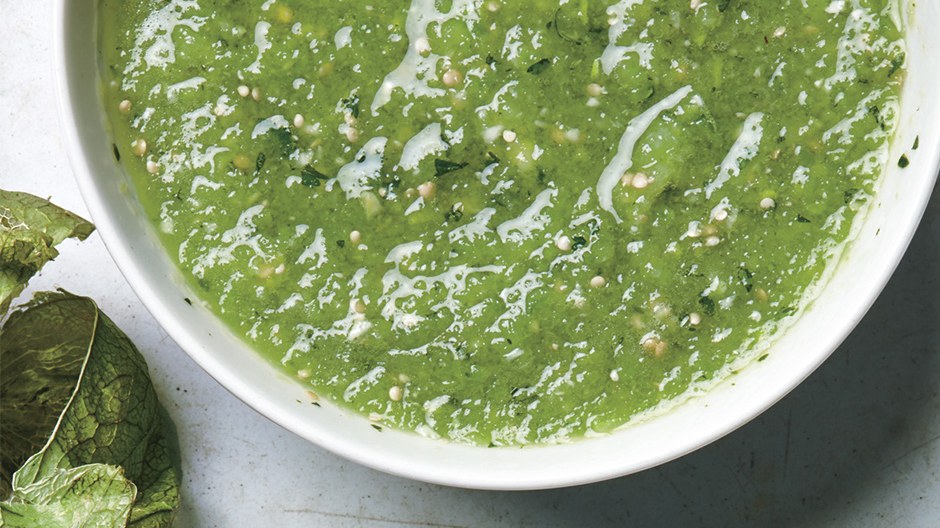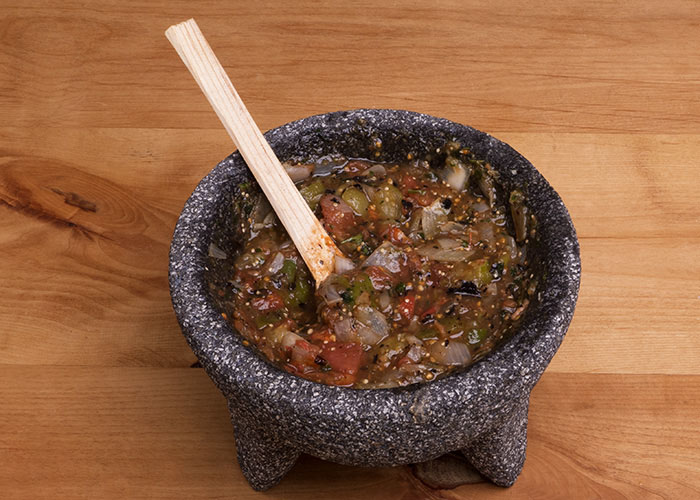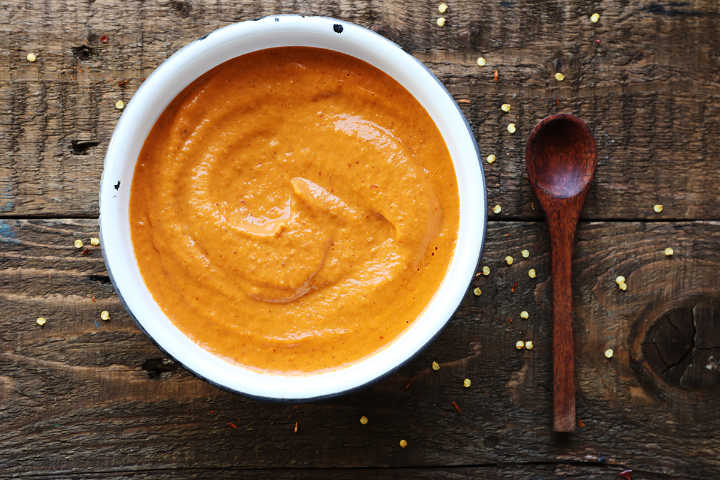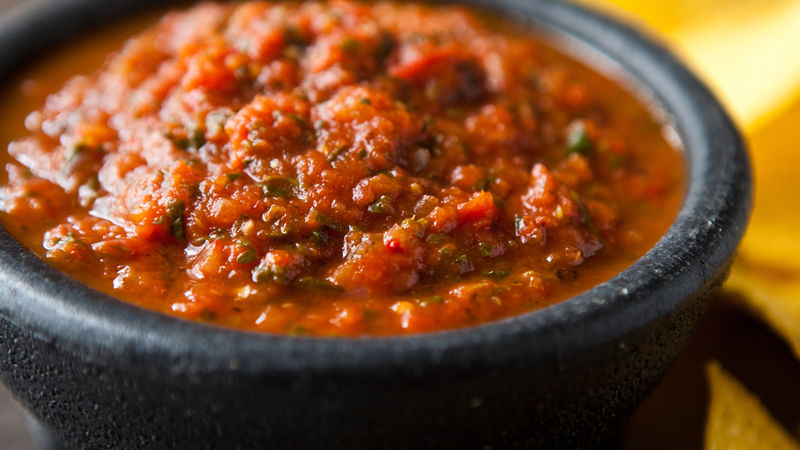Salsa is the cornerstone of the Mexican kitchen. With original salsa recipes tracing back to the days of the Aztecs and Incas, it’s hard to imagine Mexican food without it. A proper Mexican salsa is the perfect condiment that ties an entire dish together, providing just the right amount of heat, acidity, and salt. Meant to take a dish from good to exceptional, it’s worth understanding the basics of a homemade salsa.
While it’s almost certain that most people have tasted a few classics like pico de gallo and the generic chunky red salsas sold in supermarkets throughout the western world, there’s a whole world of inspiring salsas waiting to be explored. As Mexican cuisine has begun to take its rightful place in global culinary stardom, there’s a bit of a salsa renaissance happening. Afterall, it showcases what Mexican food is really all about – using simple, available ingredients to create something worthy of celebrating and sharing.
Flavor starts with the chili pepper
Salsa is often made with just a handful of ingredients, and it all starts with the chili pepper. With hundreds of varieties to choose from, it’s important to understand the flavor profile of Mexico’s most popular peppers.
Salsas can be made with either fresh or dried chilies, but the two are generally not combined. The types made with dried chilies tend to be pureéd and more rich, lending themselves to being used in smaller amounts and dolloped onto tacos, eggs, or grilled veggies. Salsas made with fresh chilies vary widely. They may be either cooked or raw and can be used as a dip, a sauce, or a flavoring.
Some of the most common fresh chilies include the well-known jalapeño and serrano, the frightfully spicy habañero, and the mild poblano. Salsas that are made with dried chilies often make use of fruity guajillo, sweet ancho, smoky chipotle, or nutty cascabel.
Of course, peppers are subject to nature’s whimsy, and can always vary in flavor and heat level. The region a pepper is grown in, the weather, and the amount of ripeness at picking can all affect how each pepper will taste.
Methods for making Mexican salsas
In addition to the variety of chili pepper used, the final flavor of a salsa is ultimately affected by the method of preparation. Raw, roasted, cooked, or fried – the culminating texture and taste will be determined by the chosen process.
The flavor of a raw salsa is meant to be bright and in-your-face. With a raw salsa, all the ingredients are chopped up and tossed together. Some of them may require sitting in the refrigerator overnight for the flavors to mingle and soften. Others are best eaten as soon as possible, while everything is at its freshest.
Roasted sauces are more mellow and savory. Ingredients for a roasted salsa can be oven roasted or cooked over an open fire. Roasting concentrates the sugars and certain flavors in vegetables and creates a completely new flavor profile. If cooked over an open flame, the resulting salsa will maintain some smokiness.
When the ingredients for a salsa are fried in oil, a certain silky creaminess is achieved in the end product. The fat that is used for frying should be chosen carefully, as different oils impart their own flavor in a dish.
With a basic understanding of flavor and technique out of the way, let’s take a look at some of the most common Mexican salsas.
Salsa Verde

This vibrant green sauce is made with cooked tomatillos, jalapeños, cilantro, and lime. Onions and a fair amount of garlic add a depth of flavor and savoriness. With a bright acidity from the tomatillos and fresh lime juice, it’s often used to complement rich foods, such as pork dishes. It’s also great with breakfast dishes, like eggs and chilaquiles.
Pico De Gallo

Perhaps the most well-known of Mexican salsas, this chunky sauce is made with all raw ingredients. Diced fresh onion, garlic, tomatoes, jalapeños, and cilantro make a lovely and colorful presentation. Tossed with a generous amount of fresh lime juice, pico de gallo is equal parts tart, salty, and fresh. Known in Mexico as “salsa Mexicana”, it’s often served as an appetizer with tortilla chips. However, it is also a great topping for any taco that could use a touch of freshness.
Salsa Roja de Molcajete

Dark and seductive, this stone-ground red sauce is based on just three main ingredients – tomatoes, serrano peppers, and garlic. Traditionally, the tomatoes and chilies are cooked over flame until they become black and blistered. Then, the ingredients are ground together in a molcajete, a mortar and pestle made from volcanic rock. Rich and smoky and bittersweet, this salsa is great with beans and rice, eaten with warm tortillas, or served with grilled meats.
Taquera

Taquera is a tomato-based, puréed salsa made from dried árbol chilies. Spicy and garlicky, this smooth sauce gets its lovely orange color from the combination of tomatoes and dried peppers. It’s made by cooking tomatoes, onions, garlic, and chilies together. The process of browning the vegetables creates a depth of flavor and concentrates the sweetness of the tomatoes. All of this is then thrown together in a blender with a bit of oil, and buzzed up into a thick, creamy salsa. You can find it being served at taco stands throughout Mexico.
Chipotle Salsa

As chipotles are fire-roasted jalapeño peppers, they tend to be quite spicy as well as smoky. Like so many other classic Mexican salsas, chipotle salsa is made with tomatoes, chilies, onions, and garlic. A little bit of lime, cilantro, and cumin balance out the final flavor of this sauce. To make chipotle salsa, you can use either dried peppers or canned chipotles in adobo sauce. Sometimes smooth and blended, other times served chunky, it’s a great condiment when you want a little extra kick.







